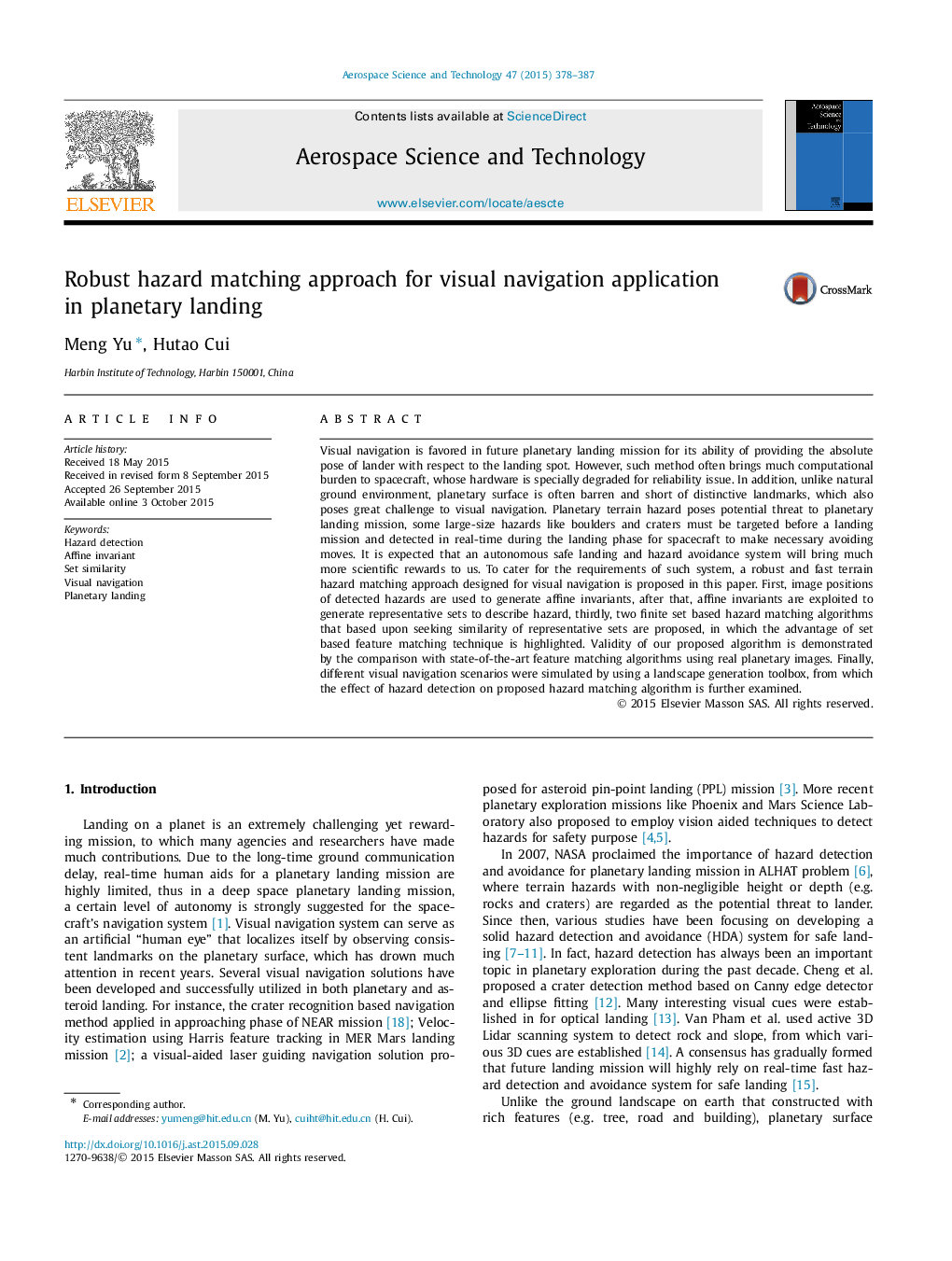| Article ID | Journal | Published Year | Pages | File Type |
|---|---|---|---|---|
| 8058758 | Aerospace Science and Technology | 2015 | 10 Pages |
Abstract
Visual navigation is favored in future planetary landing mission for its ability of providing the absolute pose of lander with respect to the landing spot. However, such method often brings much computational burden to spacecraft, whose hardware is specially degraded for reliability issue. In addition, unlike natural ground environment, planetary surface is often barren and short of distinctive landmarks, which also poses great challenge to visual navigation. Planetary terrain hazard poses potential threat to planetary landing mission, some large-size hazards like boulders and craters must be targeted before a landing mission and detected in real-time during the landing phase for spacecraft to make necessary avoiding moves. It is expected that an autonomous safe landing and hazard avoidance system will bring much more scientific rewards to us. To cater for the requirements of such system, a robust and fast terrain hazard matching approach designed for visual navigation is proposed in this paper. First, image positions of detected hazards are used to generate affine invariants, after that, affine invariants are exploited to generate representative sets to describe hazard, thirdly, two finite set based hazard matching algorithms that based upon seeking similarity of representative sets are proposed, in which the advantage of set based feature matching technique is highlighted. Validity of our proposed algorithm is demonstrated by the comparison with state-of-the-art feature matching algorithms using real planetary images. Finally, different visual navigation scenarios were simulated by using a landscape generation toolbox, from which the effect of hazard detection on proposed hazard matching algorithm is further examined.
Related Topics
Physical Sciences and Engineering
Engineering
Aerospace Engineering
Authors
Meng Yu, Hutao Cui,
